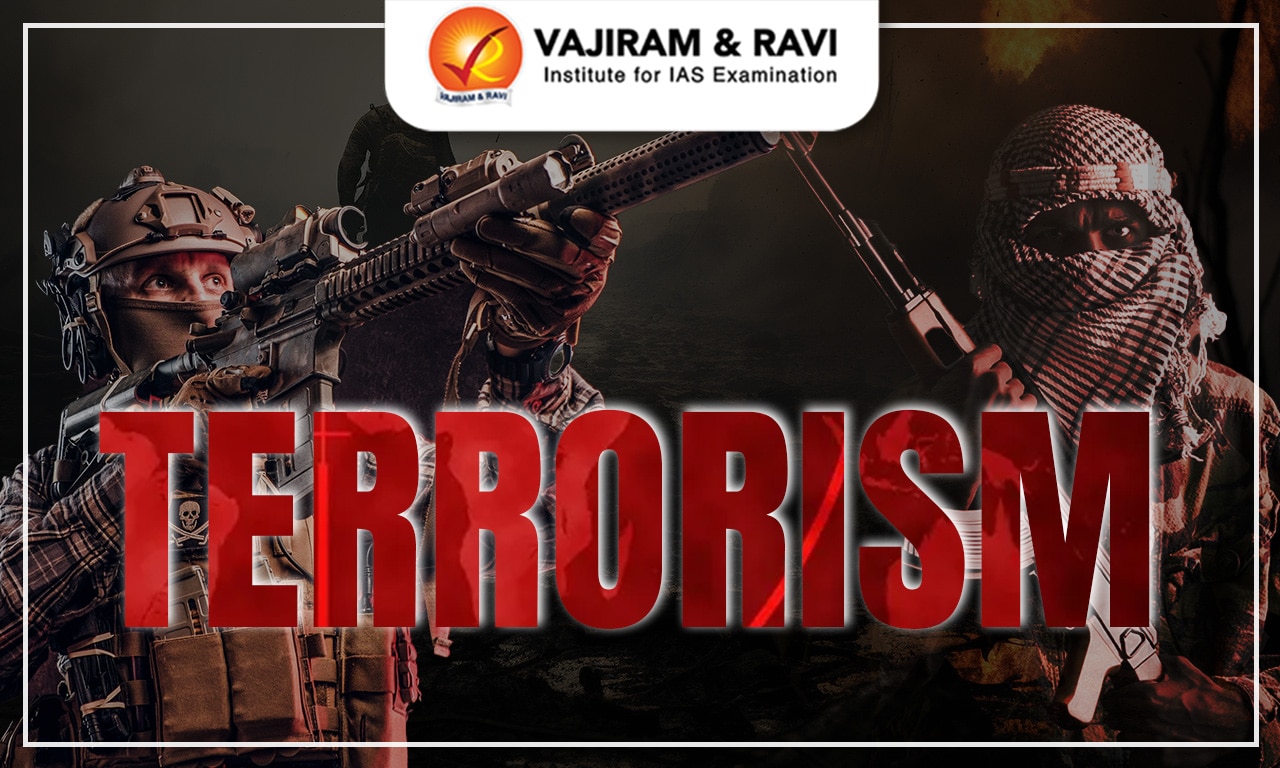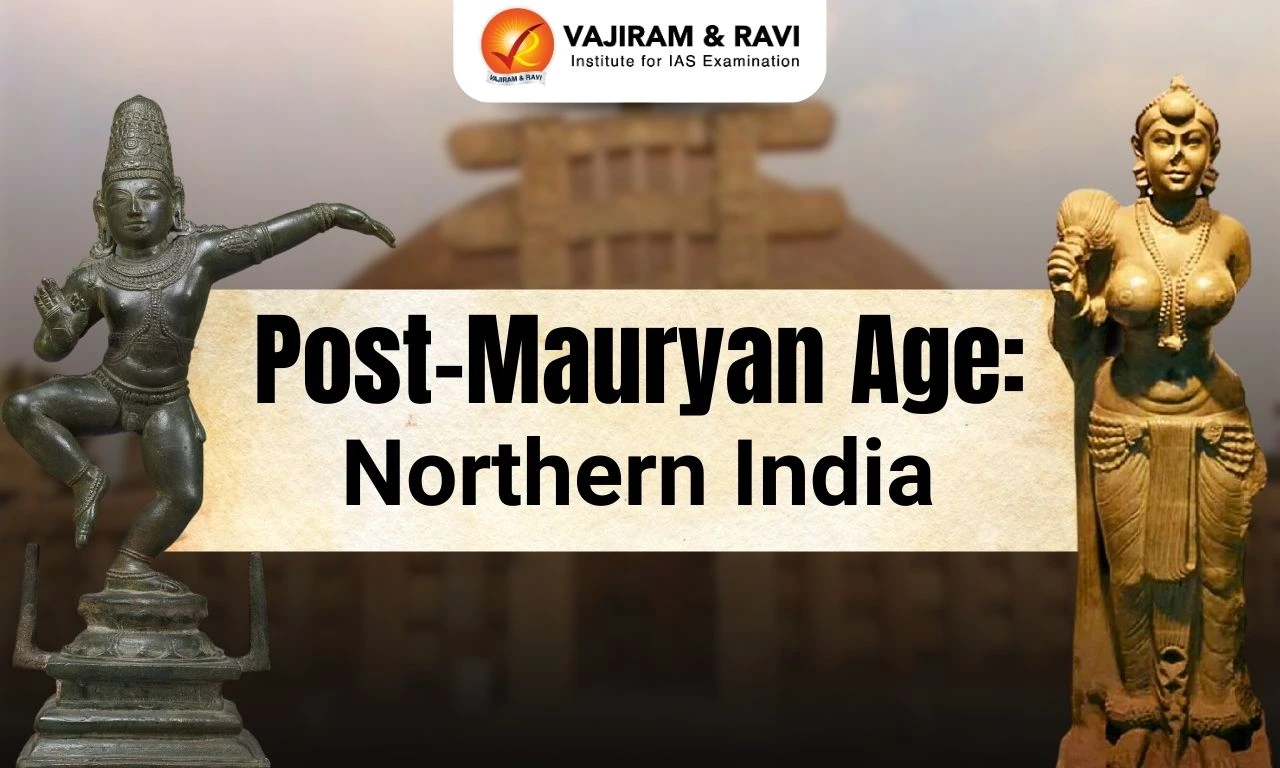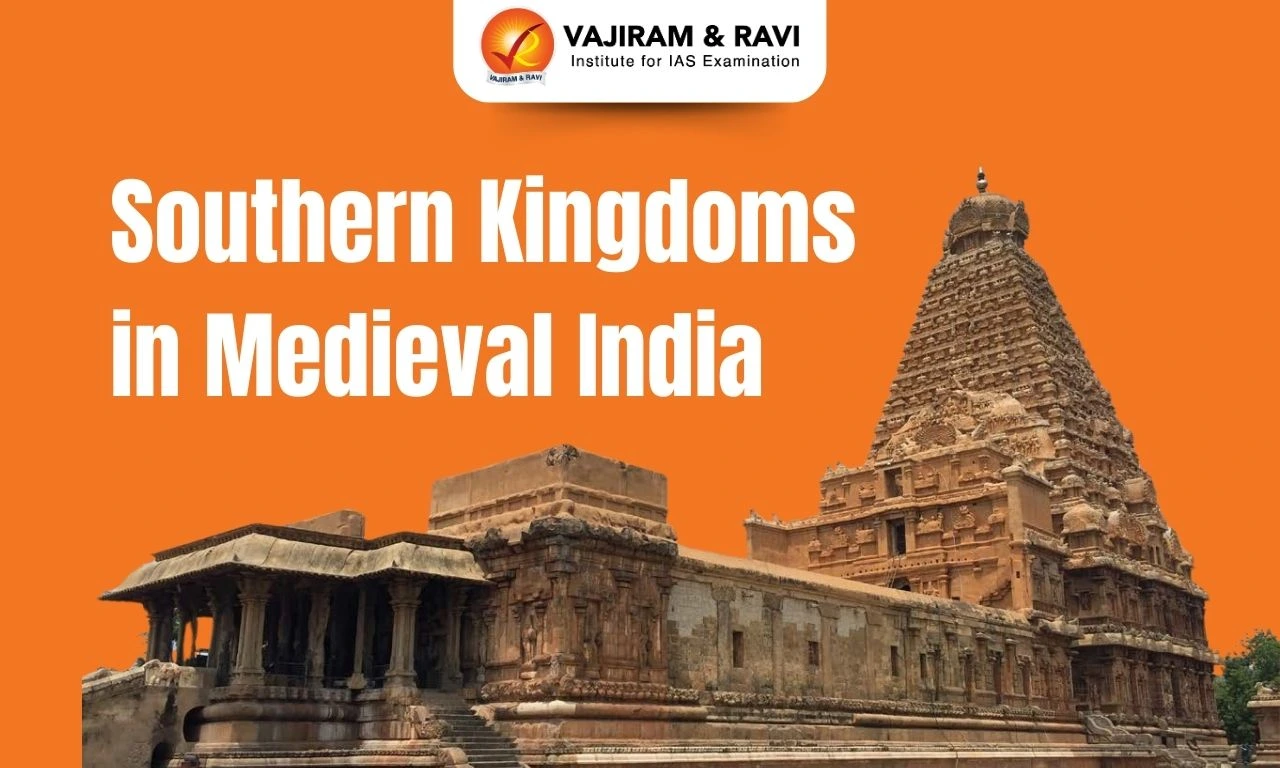Terrorism is a systematic method that uses violence and intimidation, particularly against civilians, to achieve political, ideological, or religious goals. Terrorism in India has been a persistent and multifaceted challenge, affecting national security, socio-economic stability, and international relations.
According to the Global Terrorism Index 2025, India is ranked 14th among the most affected countries. The Indian government combats terrorism through law enforcement, military operations, intelligence gathering, and international cooperation.
Terrorism Definition
Terrorism is defined as the deliberate use of force or threats of force, often against civilians, in order to instil fear and achieve social, political, or ideological goals.
- Section 113 of Bharatiya Nyaya Sanhita, 2023 defines terrorist act as any act with the intent to threaten or likely to threaten the unity, integrity, sovereignty, security, or economic security of India or with the intent to strike terror or likely to strike terror in the people or any section of the people in India or any foreign country.
- Such acts include using hazardous materials, explosives, firearms, or other means to cause death, bodily harm, destruction of property, disruption of essential services, or interference with critical infrastructure.
- Anyone convicted of carrying out a terrorist act may face either the death penalty or life imprisonment. Individuals who conspire, aid, incite, or knowingly assist such acts can be sentenced to imprisonment ranging from five years to life.
Terrorism Types
Terrorism types can be categorised based on various factors, such as the motivations, methods, and organisational structures of the perpetrators. These include ethno-nationalist terrorism, religious terrorism, state-sponsored terrorism, ideology-based terrorism, and bioterrorism.
Ethno-Nationalist Terrorism
Ethno-Nationalist Terrorism is a deliberate violence by a subnational ethnic group to advance its cause, like the creation of a separate state. For example, insurgent Naga ethnic groups in north-east India want to create their separate state, “Nagalim - Greater Nagaland”.
Religious Terrorism
Religious Terrorism has become the predominant model for political violence in the modern world, which aims to achieve religious goals or establish a theocracy. For example, current terrorist organisations like Al-Qaeda use religion as a ground to spread terrorism.
State-sponsored Terrorism
State-sponsored Terrorism is the use of violence by a government against its people or the people of another country. For example, Pakistan is often alleged to be at the forefront of spreading terrorism in India.
Ideology Oriented Terrorism
Ideology Oriented terrorism is driven by extremist political or social ideologies, aiming to reshape society. It includes both left-wing (e.g., Maoist) and right-wing (e.g., fascist or ultra-nationalist) movements using violence to achieve goals.
- Right-wing terrorism: This is terrorism carried out by groups or individuals who hold extreme right-wing views, such as fascism.
- Left-wing terrorism: This is terrorism carried out by groups or individuals who hold extreme left-wing views, such as communism or anarchism.
Bio-Terrorism
Bio-Terrorism refers to the intentional release of biological agents or toxins to harm or kill humans, animals or plants with the intent to intimidate or coerce a government or civilian population to further political or social objectives.
Cross-Border Terrorism
Cross-border terrorism occurs when one country’s territory is used to launch terror activities against a neighbouring country. India often faces this issue, with many attacks originating from Pakistan. Factors contributing to cross-border terrorism include porous borders, local support and backing from non-state actors.
Narcoterrorism
Narcoterrorism is the term used to describe the financing and support of terrorist actions through drug trafficking. Terrorist groups engage in the production, transport, and sale of narcotics to finance operations, purchase weapons, and expand influence, often destabilising regions and undermining law enforcement.
Cyberterrorism
Cyberterrorism refers to the intentional use of digital platforms to carry out or threaten violent actions, typically targeting computer systems and networks. The intention is to use force or terror to further ideological or political ambitions.
Lone Wolf Attacks (Lone Actor Terrorism)
Lone wolf attacks refer to acts of terrorism carried out by individuals acting independently, without direct support or orders from organised terrorist groups. These attackers are often self-radicalized through online propaganda and ideologies, making them difficult to detect and prevent. Lone wolf terrorism poses a significant threat because such individuals blend into society and may strike at soft targets with little warning.
Terrorism Causes
Terrorism causes include political instability, socio-economic deprivation, religious extremism, ideological indoctrination, and strategic motivations, all of which foster alienation, radicalization, and violent responses against the state and society. In India, terrorism is mainly fueled by the following factors:
- Ethnic and Separatist Movements: Certain areas in India have experienced movements rooted in ethnic identity or demands for secession, which have occasionally employed terrorist methods to push their agendas.
- Example: The ongoing unrest in Jammu and Kashmir, driven by separatist and autonomy-related aspirations, has led to the emergence of armed groups such as Hizbul Mujahideen and Lashkar-e-Taiba (LeT).
- Radicalisation and Recruitment: Online radicalisation, particularly through social media and digital platforms, has significantly contributed to the growth of terrorism in India. Some individuals have been drawn into the fold of global terror networks.
- Example: There have been documented instances of Indian nationals being influenced and recruited via online channels to join international terror outfits like ISIS.
- Geopolitical Factors: India's geopolitical relations with neighbouring countries, such as Pakistan and China, have had security implications and have been exploited by terrorist organisations for their agendas
- Proximity to Conflict Zones: India is located close to areas of conflict, including Pakistan and Afghanistan, with which it shares borders. This geographical proximity can lead to the infiltration of militant groups and the spread of terrorist activities.
- Illegal Immigration: The influx of illegal immigrants can result in significant demographic shifts, leading to economic and social tensions. For example, in Assam and Tripura, the inability to control large-scale illegal immigration from Bangladesh has altered the demographic composition, fostering economic and social tensions between immigrants and indigenous populations.
- Socio-Economic Causes: Poverty, illiteracy, and lack of political freedom can push people toward terrorism or make them easier targets for recruitment by terrorist groups. However, understanding these causes is complex, as feelings of injustice or deprivation can vary regardless of one’s economic situation.
Terrorism Terror Financing
Terror financing involves providing funds to support terrorist activities. This funding is used to recruit members, maintain logistics hubs, and conduct operations. Similar to money laundering, terror financing follows three stages: raising, moving, and using funds. It enables terrorists to spread violence, recruit individuals, and sustain their operations.
- Sources of Terror Financing: Terror financing draws from various sources, including cryptocurrencies, banking channels, and informal networks like Hawala. It also involves exploiting charitable organisations and state sponsorship to fund terrorist activities globally.
- Initiatives to Curb Terror Funding: Several global efforts, including United Nations (UN) resolutions, Financial Action Task Force (FATF) regulations, and international declarations such as the Delhi Declaration (CTC), aim to impose financial sanctions on terrorism and prevent money laundering.
Linkages of Organised Crime with Terrorism
Linkages between organised crime and terrorism have become increasingly evident, posing a serious threat to national and global security. Terrorist groups often rely on organised crime networks to finance their operations through drug trafficking, arms smuggling, human trafficking, extortion, and counterfeit currency.
- These criminal enterprises offer logistical support, weapons, and safe havens, enabling terrorists to operate across borders. In return, terrorists provide protection or share ideological cover with criminal syndicates.
- The convergence of these two threats makes detection and dismantling more difficult for law enforcement.
- This nexus undermines governance, weakens the rule of law, and fuels instability, especially in conflict-prone and poorly governed regions. Thus, a comprehensive and coordinated response is essential.
Terrorism Proxy War
Proxy war is a conflict in which two opposing powers use third parties as substitutes for fighting each other directly. These wars are typically fueled by external support—financial, military, or ideological—given to local insurgent groups or governments by larger powers.
- Proxy wars allow influential countries to pursue strategic interests, avoid direct confrontation, and minimise their own casualties.
- The Cold War era saw several such conflicts, including in Afghanistan and Vietnam. In the Indian context, cross-border terrorism in Jammu and Kashmir is often viewed as a form of proxy war waged by Pakistan to destabilise India.
Major Terror Attacks in India
India has experienced numerous significant terrorist attacks over the years, impacting national security and public consciousness. Major terror attacks in India include the 2001 Indian Parliament Attack, the 26/11 attack in Mumbai and the recent Uri and Pulwama attacks.
- Indian Parliament Attack: On December 13, 2001, five armed terrorists from Pakistan-based groups Jaish-e-Mohammed and Lashkar-e-Taiba stormed the Indian Parliament. The attack killed nine people and nearly sparked a full-scale war between India and Pakistan.
- Mumbai Attacks: The 26/11 attacks were a series of coordinated terrorist strikes by Lashkar-e-Taiba. Over four days, gunmen targeted iconic locations like the Taj Mahal Hotel, killing 175 people and injuring over 300. The attacks involved shootings, bombings, and hostage crises.
- Delhi Serial Blasts: On October 29, 2005, three coordinated blasts rocked Delhi just before Diwali, killing over 60 and injuring 200. The attacks, carried out by the Pakistan-based group LeT, aimed to incite communal tensions in the capital.
- Uri Attack: On September 18, 2016, four heavily armed terrorists attacked an Indian Army base in Uri (Jammu and Kashmir), killing many soldiers. It led to India launching “surgical strikes” across the Line of Control as a retaliatory measure.
- Pulwama Attack: A suicide bomber from Jaish-e-Mohammed rammed an explosive-laden vehicle into a CRPF convoy in Pulwama, killing 40 personnel. This marked one of the deadliest attacks on Indian security forces and escalated Indo-Pak tensions sharply.
- Pahalgam Terror Attack: On April 22, 2025, five heavily armed militants attacked tourists in Baisaran Valley near Pahalgam, Jammu and Kashmir, killing 26 and injuring over 20. This was one of the deadliest civilian attacks in the region in recent years.
Terrorism Impacts
Terrorism impacts national security by causing loss of lives, economic disruption, political instability, social fragmentation, and psychological trauma, undermining development, peace, and public trust in governance.
- Human Lives Cost: Deaths from terrorist attacks have resulted in a significant death toll. For instance, Lashkar-e-Taiba carried out the 2008 Mumbai attacks, which left over 300 people injured and over 160 dead.
- Impact on Society: Terrorist violence has a profound influence on social attitudes, including trust in governmental institutions and attitudes towards migration and civil freedoms. A complex range of negative emotions, such as anxiety, anger, sorrow, and a sense of vulnerability and helplessness, are experienced by citizens as a result of acts of terrorism.
- Impact on the Economy: The most obvious is the direct economic destruction of property and lives (especially of armed forces personnel). For instance, the 2016 Pathankot attack exposed weaknesses in vital infrastructure and caused damage to the Air Force installation. Terrorism has an indirect impact on the economy through increasing insurance claims, xenophobia, lost tourism, and market uncertainty.
- Impact on International Relations: The proof of terrorist attacks sourced from other countries leads to a strain in bilateral relations between two or more countries. For example, the 26/11 terrorist attacks were traced to Pakistan, because of which bilateral relations between the two states have been strained.
- Deviation of Resources: As terrorist attacks hamper national security, limited resources are diverted towards defence in the form of arms mobilisation, border management, armed force recruitment, etc.
Steps Taken by India to Combat Terrorism
Steps taken by India to combat terrorism include a multi-pronged approach, focusing on both pre-emptive measures and response capabilities. These measures include legal, military, intelligence, diplomatic, and socioeconomic strategies.
- National Investigation Agency: NIA was created to streamline information sharing and investigations across federal and state lines. It has dealt with well-known cases, including the Pathankot attack in 2016 and the Hyderabad explosions in 2013.
- National Intelligence Grid (NATGRID): NATGRID was created to develop cutting-edge technology to enhance India’s counter-terror capabilities. It is a seamless and secure database that provides information on terrorists, economic crimes, etc.
- Anti-Terrorism Squads (ATS): Trained to handle terrorist occurrences, these specialised squads are part of the unit present in several state police agencies of India.
- For instance, the Mumbai ATS worked on the investigation of the Mumbai attacks on 26/11.
- International Cooperation: India has taken a leading role in international counterterrorism forums and campaigns. For example, it collaborates with the Financial Action Task Force (FATF) to prevent terrorist financing. Further, India participates in global counterterrorism initiatives like the United Nations Security Council's Counter-Terrorism Committee (UNSC-CTC).
- Unlawful Activities (Prevention) Act (UAPA), 1967: UAPA was initially passed to address illegal activity, but it has since undergone multiple amendments to strengthen its anti-terrorism powers. The 2019 amendment allowed for the attachment of a suspect's property and significantly reinforced the Act by identifying some people as terrorists.
- Anti-Terrorist Operations: India has carried out various counter-terrorism operations to combat terrorism and protect national security. Notable examples include Operation Black Thunder (1986 and 1988) against the Khalistani movement, Operation Vijay during the Kargil War, and the Surgical Strikes after the Uri attack.
- Recently, the Indian Army launched 'Operation Sindoor' as a response to the Pahalgam Terror attack, destroying terrorist camps located in Pakistan.
- Cross-Border Management: To tackle cross-border infiltration, the government uses strategies like force deployment along the border, surveillance technology (cameras, sensors), multi-tiered security, border fencing, intelligence gathering, ambushes, and setting up border posts for local intelligence.
- Other Measures: The government has taken several steps to curb terrorist violence, including proactive operations against terrorists, arresting their supporters, and deploying police, Army, and Central Armed Police Forces (CAPFs). Measures also include night patrolling, property attachment, intelligence sharing, and intensified search operations, especially in Jammu & Kashmir.
Terrorism in India Challenges
Terrorism in India poses serious challenges, including cross-border infiltration, radicalisation, lack of coordinated intelligence, porous borders, and difficulty balancing security measures with civil liberties and human rights protections.
- Prime Focus on Using Force: Since the rise of terrorism in India, it has primarily focused on the use of force to tackle the terrorists. For example, AFSPA has been primarily implemented in the regions affected by terrorism, such as Jammu and Kashmir and the Northeastern states.
- Lack of Universal Definition: There is no universally accepted definition of terrorism, making it challenging to classify specific activities as terrorist acts. This gives terrorists an advantage, allowing some countries to remain silent or veto any action at global institutions.
- Human Rights Concerns: Civil society groups' allegations of human rights violations by security forces have often prevented them from taking direct action and limited the political establishment's involvement. Laws such as the Armed Forces Special Powers Act (AFSPA) have been controversial and criticised for causing excesses and alienating local populations.
- Budget Constraints: Despite significant efforts to improve counterterrorism capabilities, budgetary constraints frequently limit their effectiveness. For example, while India's defence budget has increased, there are still challenges in allocating sufficient resources to counter-terrorism operations and technological upgrades.
- Lack of Coordination: There are issues of coordination between the state and central governments regarding counter-terrorism operations. For example, in the Northeastern states, there still exists a lack of coordination between the central and state governments to counter terrorism.
Terrorism Way Forward
Terrorism Way Forward requires strengthening intelligence, modernising security forces, counter-radicalization efforts, legal reforms, inclusive development, and international cooperation to ensure national security and long-term peace.
- Strengthen the Legal Framework: Anti-terrorism laws should be updated regularly to address emerging threats while remaining robust and respectful of human rights.
- Enhanced Intelligence Coordination: Improve coordination among intelligence agencies and ensure seamless information sharing at the national and state levels.
- Integrated Command Structures: Establish integrated command structures to respond quickly to terrorist incidents and improve coordination among security forces.
- Advanced Surveillance: Invest in cutting-edge surveillance technologies, such as AI-powered predictive analytics, facial recognition systems, and biometric databases.
- Community Engagement: Increase community engagement to foster trust and gather actionable intelligence. Encourage community policing and involve local leaders in anti-radicalization initiatives.
- Strengthen Diplomatic Ties: Increase diplomatic efforts to form stronger international coalitions against terrorism, with a focus on intelligence sharing, joint operations, and capacity building.
Terrorism in India UPSC PYQs
Q1: Explain how narco-terrorism has emerged as a serious threat across the country. Suggest suitable measures to counter narco-terrorism. (UPSC Mains 2024)
Q2: Winning of ‘Hearts and Minds’ in terrorism-affected areas is an essential step in restoring the trust of the population. Discuss the measures adopted by the Government in this respect as part of the conflict resolution in Jammu and Kashmir. (UPSC Mains 2023)
Q3: Discuss the types of organised crimes. Describe the linkages between terrorists and organised crime that exist at the national and transnational levels. (UPSC Mains 2022)
Q4: Analyse the complexity and intensity of terrorism, its causes, linkages and obnoxious nexus. Also, suggest measures required to be taken to eradicate the menace of terrorism. (UPSC Mains 2021)
Q5: Indian Government has recently strengthened the anti-terrorism laws by amending the unlawful Activities (Prevention) Act (UAPA), 1967 and the NIA Act. Analyse the changes in the context of the prevailing security environment while discussing the scope and reasons for opposing the UAPA by human rights organisations. (UPSC Mains 2019)
Last updated on December, 2025
→ Check out the latest UPSC Syllabus 2026 here.
→ Join Vajiram & Ravi’s Interview Guidance Programme for expert help to crack your final UPSC stage.
→ UPSC Mains Result 2025 is now out.
→ UPSC Notification 2026 is scheduled to be released on January 14, 2026.
→ UPSC Calendar 2026 is released on 15th May, 2025.
→ The UPSC Vacancy 2025 were released 1129, out of which 979 were for UPSC CSE and remaining 150 are for UPSC IFoS.
→ UPSC Prelims 2026 will be conducted on 24th May, 2026 & UPSC Mains 2026 will be conducted on 21st August 2026.
→ The UPSC Selection Process is of 3 stages-Prelims, Mains and Interview.
→ UPSC Result 2024 is released with latest UPSC Marksheet 2024. Check Now!
→ UPSC Prelims Result 2025 is out now for the CSE held on 25 May 2025.
→ UPSC Toppers List 2024 is released now. Shakti Dubey is UPSC AIR 1 2024 Topper.
→ UPSC Prelims Question Paper 2025 and Unofficial Prelims Answer Key 2025 are available now.
→ UPSC Mains Question Paper 2025 is out for Essay, GS 1, 2, 3 & GS 4.
→ UPSC Mains Indian Language Question Paper 2025 is now out.
→ UPSC Mains Optional Question Paper 2025 is now out.
→ Also check Best IAS Coaching in Delhi
Terrorism in India FAQs
Q1. What are examples of terrorism in India?+
Q2. What is terrorism in India?+
Q3. What are 5 common types of terrorism?+
Q4. What is the main reason for terrorism?+
Q5. Which agency fight terrorism in India?+

















